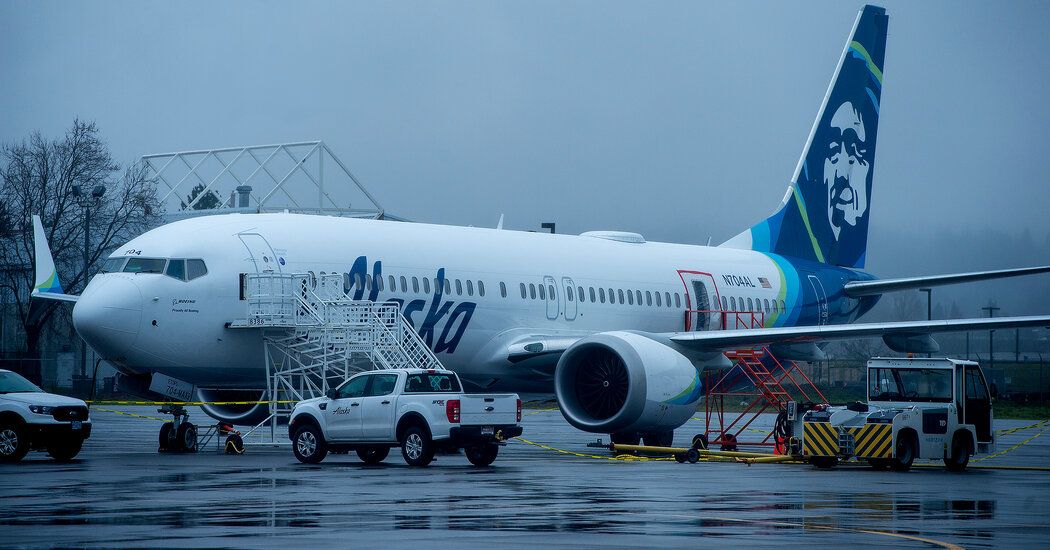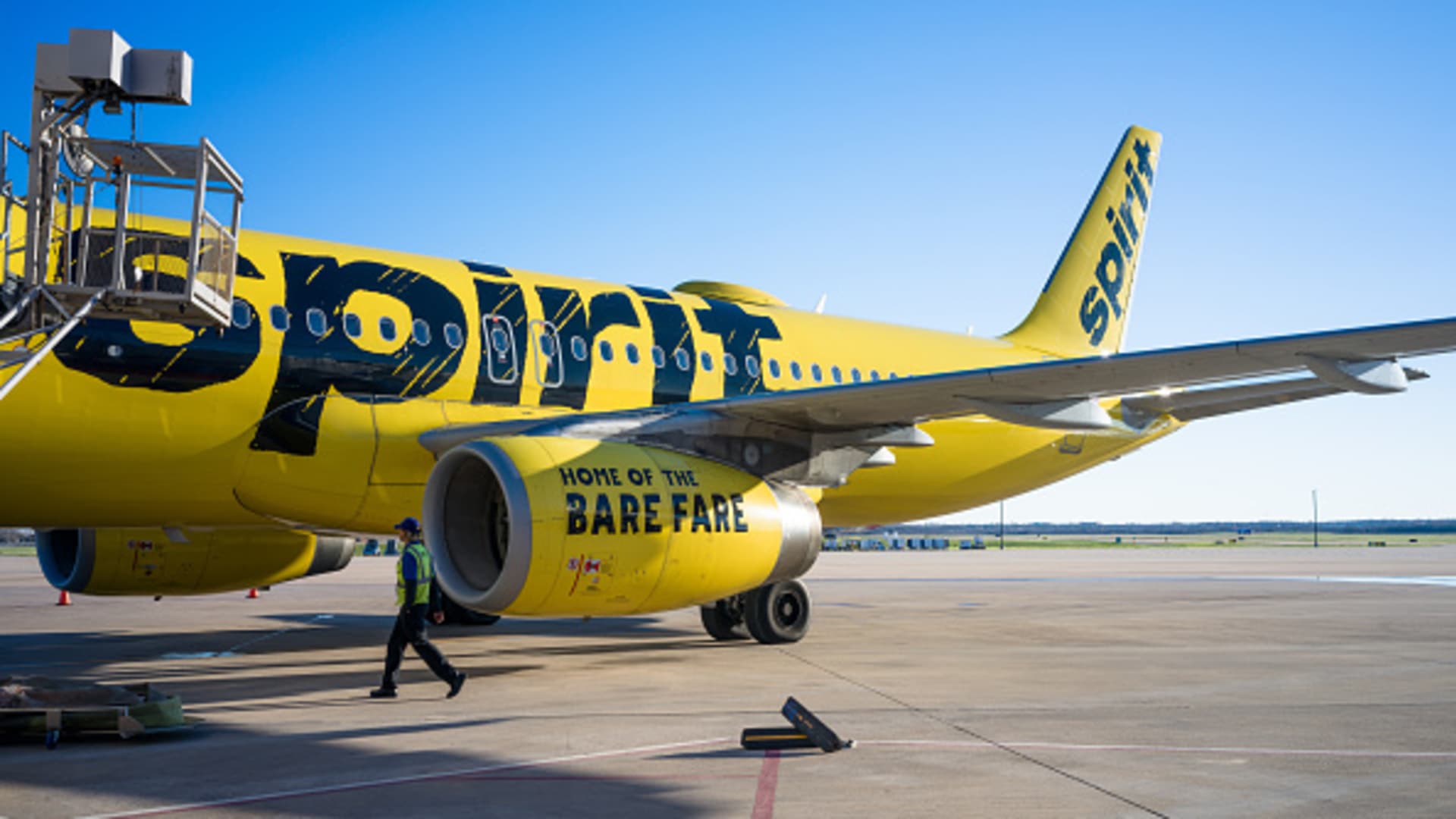United Airlines said Monday it had found loose bolts in the panels of its Boeing 737 Max 9 planes that are similar to the part of an Alaska Airlines plane that exploded during a flight on Friday, adding to growing safety concerns. about the Max 9.
The disclosure came after reports that Alaska Airlines had been warned three times about problems with cabin pressure on its plane. Those warnings were significant enough that the airline decided the plane could no longer be used on flights to Hawaii.
United found the loose bolts in the panels, known as plugs in the industry, after beginning to remove the seats and sidewall coverings to inspect the part this weekend, the airline said Monday. The plugs are placed where an emergency exit door would be if a plane had more seats.
A door plug suddenly flew off the Alaska Airlines plane Friday during a drop in cabin pressure about 10 minutes after takeoff from Portland, Oregon, subjecting passengers to howling winds and forcing pilots to turn back. quickly to the airport. The door plug, phones, toys and other personal items came out of the hole in the side of the plane and fell onto the city.
Airlines have canceled hundreds of flights as they prepare to inspect nearly 200 planes that will remain grounded until regulators and company officials decide they are safe. Alaska Airlines used 65 Max 9 planes, about 20 percent of its fleet, and United used 79, more than any other airline and about 8 percent of its fleet, according to Cirium, an aviation data provider. Some passengers’ travel plans could be disrupted for days.
The Federal Aviation Administration sent instructions to airlines on Monday on how to conduct inspections, although Alaska and United said they were waiting for additional approval from the FAA to begin.
Officials led by the National Transportation Safety Board focus on, among other things, plug installation and inspection.
“I think investigators will focus on the manufacturing process of this particular airplane,” said Jeff Guzzetti, a former NTSB and FAA investigator. “How was this door stopper installed or who installed it?”
The door was initially installed by Spirit AeroSystems, which makes the bodywork for the 737 Max and other planes. Investigators said they were looking into whether work had been done on or near the gate since the plane entered service in November.
Jennifer Homendy, chairwoman of the NTSB, said investigators had a lot of work to do, including inspecting the plug, which was recovered from a backyard near Portland. The board will also examine a plug that remained intact on the other side of the plane, interview flight crew and passengers, review maintenance and repair records and conduct laboratory analysis of plane parts.
Investigators may also investigate whether the installation of wireless Internet equipment on the plane by a contractor, AAR, between Nov. 27 and Dec. 7 played any role in the pressurization problems, which arose after it was completed. the job. In a statement, AAR said Monday that it “did not perform any work on or near any center cabin exit door plugs on that specific aircraft.”
While no serious injuries were reported, the crash could have been much more catastrophic, especially if the plane had been at a higher altitude, experts said. Homendy said Sunday night that the passengers included three infants and four unaccompanied children between the ages of 5 and 17.
Homendy said in a brief interview Monday that his team was reviewing the plane’s flight data recorder to try to determine if the pressurization warning light can be linked to the door plug. The plane has several backup systems in case one of the pressurization systems fails.
“There may have been some problem with the light or with that other unit, but there are redundancies in the system,” Ms. Homendy said.
Kathleen Bangs, an aviation expert and former airline pilot, said she believed the investigation would reveal a fault in the door stopper due to the condition of the plane. Typically, explosive decompression incidents occur in older aircraft that exhibit corrosion and metal fatigue, Bangs said. In this case, she said, the plane was almost new, indicating that there was most likely a problem with the door stopper.
Anthony Brickhouse, a professor of aerospace safety at Embry-Riddle Aeronautical University, said an explosion at a cruising altitude of more than 30,000 feet could have been disastrous. “We could have been in a situation where more of the structure could have come loose and we would have been in a situation where passengers who were not properly restrained would have gone flying because the forces would have been tremendous.” he said.
Pressurization begins to affect most commercial airplanes around 8,000 feet, said Brickhouse, who previously investigated aviation accidents for the safety board. Failure to properly control the air entering and leaving the cabin can cause altitude sickness or hypoxia among passengers and crew.
Hypoxia, a condition that develops when the brain is deprived of oxygen, can occur in planes without adequate pressurization when they begin flying above 10,000 feet or undergo rapid decompression, the FAA says. This is why flight attendants tell passengers to wear pop-up masks in case of rapid decompression, Brickhouse said.
In a statement, the FAA said the required inspections would focus on plugs, door components and fasteners.
“Our teams have been working diligently, with extensive FAA review, to provide comprehensive technical instructions to operators for the required inspections,” said Stan Deal, CEO of Boeing’s commercial aircraft unit, and Mike Delaney, director aerospace safety. in a message to employees of that unit on Monday.
Other airlines with Max 9 aircraft are located outside the United States, such as Panama’s Copa Airlines, Turkish Airlines and Icelandair. The European Union’s aviation safety agency announced Monday that Max 9 planes operating in Europe were not grounded because they had a different configuration.
The FAA previously said it would take four to eight hours to inspect each plane. The inspection of the nearly 200 Max 9 planes in the United States, according to the aviation agency, could take a few days.
Aviation regulators and Boeing said the inspections were unique to the Max 9 and not other versions of the Max plane. The Max 9, along with the more popular Max 8, was grounded for nearly two years after two Max 8 crashes in 2018 and 2019 killed 346 people.
Federal authorities investigating the incident are also looking into what caused the pressurization warnings on the damaged plane during three recent flights. Alaska Airlines workers rebooted the system and the plane was back in service, although the airline restricted its use on flights to destinations such as Hawaii, Homendy said. He added that it was not yet clear whether the warnings were related to Friday’s accident.
In a statement, Alaska said it could not answer many outstanding questions about the plane and what had caused the explosion without approval from the safety board. The airline said it had asked the NTSB to share more information and would do so if allowed. In such investigations, the parties are often restricted in what they can share publicly.
Boeing CEO Dave Calhoun planned to host a company-wide safety meeting on Tuesday to discuss the company’s response to the episode and reaffirm its commitment to safety. Boeing is still working to secure approval for the smaller Max 7 and larger Max 10.
Shares of Boeing closed down about 8 percent on Monday and shares of Spirit AeroSystems closed down 11 percent.
J. Eduardo Moreno contributed with reports.









